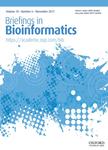版权所有:内蒙古大学图书馆 技术提供:维普资讯• 智图
内蒙古自治区呼和浩特市赛罕区大学西街235号 邮编: 010021

作者机构:INSERM Paris France Univ Cote Azur Nice France
出 版 物:《BRIEFINGS IN BIOINFORMATICS》 (生物信息学简报)
年 卷 期:2018年第19卷第6期
页 面:1290-1301页
核心收录:
学科分类:0710[理学-生物学] 07[理学] 09[农学]
基 金:FRM [DEQ20140329551, ING20140129224] ANR through the 'Investments for the Future' [ANR-11-LABX-0028-01]
主 题:RNA immunoprecipitation bioinformatics workflow computational guideline large-scale analysis quality management microRNAs human pathologies
摘 要:Cross-Linking Immunoprecipitation associated to high-throughput sequencing (CLIP-seq) is a technique used to identify RNA directly bound to RNA-binding proteins across the entire transcriptome in cell or tissue samples. Recent technological and computational advances permit the analysis of many CLIP-seq samples simultaneously, allowing us to reveal the comprehensive network of RNA-protein interaction and to integrate it to other genome-wide analyses. Therefore, the design and quality management of the CLIP-seq analyses are of critical importance to extract clean and biological meaningful information from CLIP-seq experiments. The application of CLIP-seq technique to Argonaute 2 (Ago2) protein, the main component of the microRNA (miRNA)-induced silencing complex, reveals the direct binding sites of miRNAs, thus providing insightful information about the role played by miRNA(s). In this review, we summarize and discuss the most recent computational methods for CLIP-seq analysis, and discuss their impact on Ago2/miRNA-binding site identification and prediction with a regard toward human pathologies.